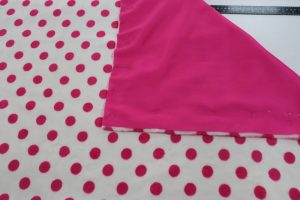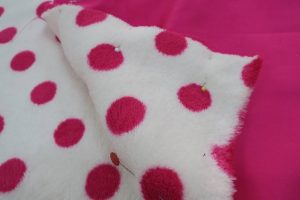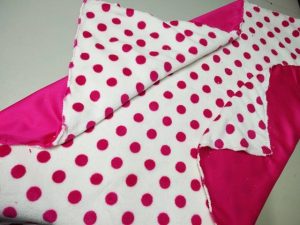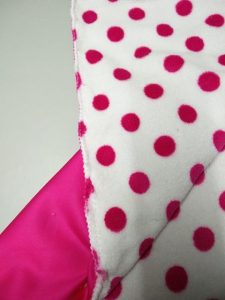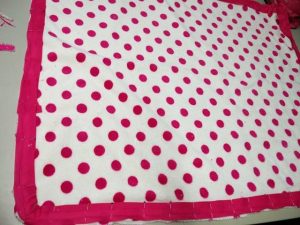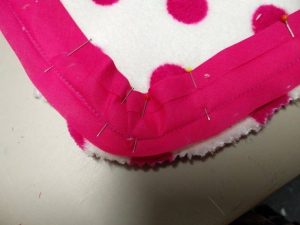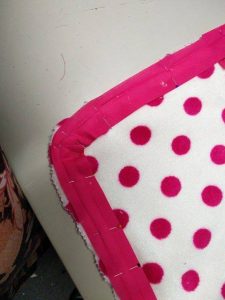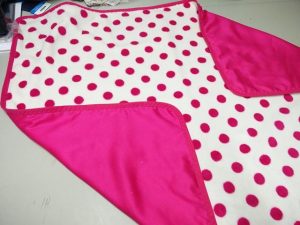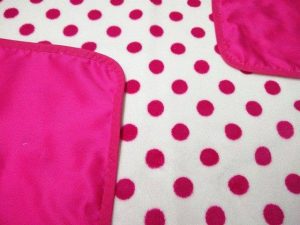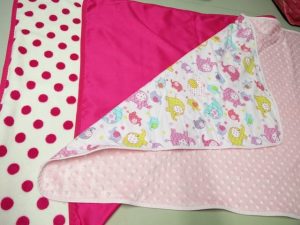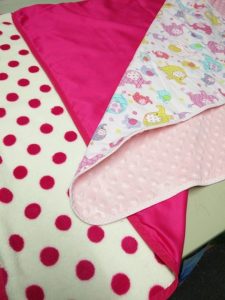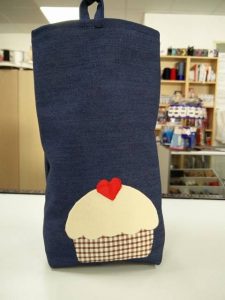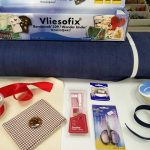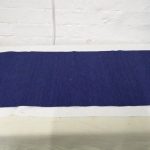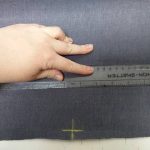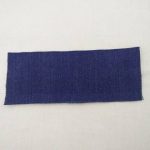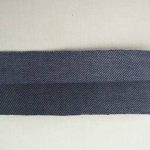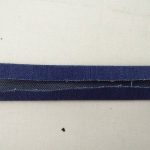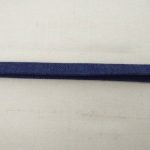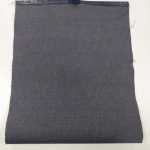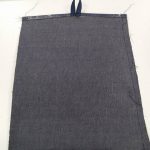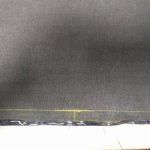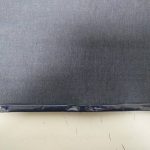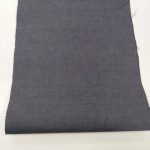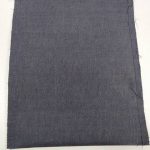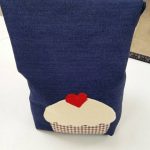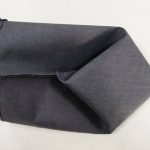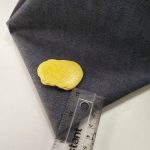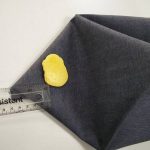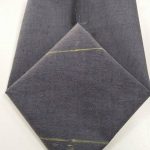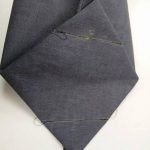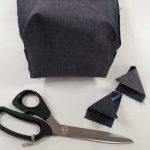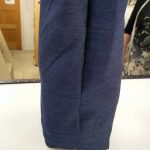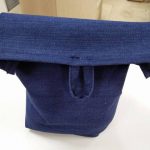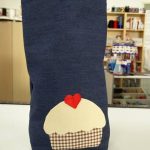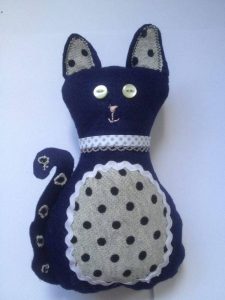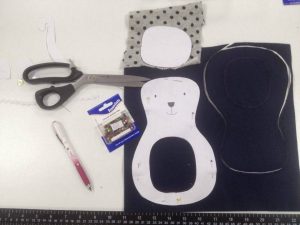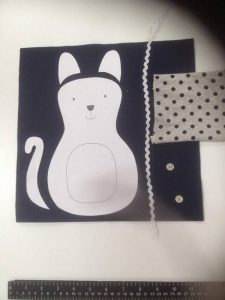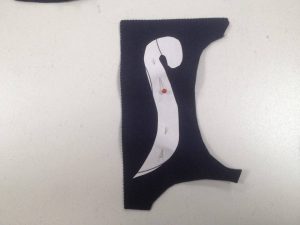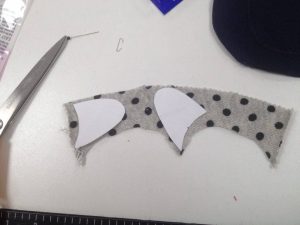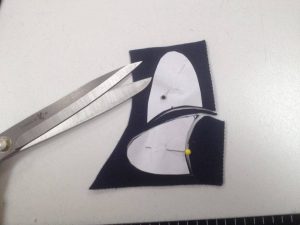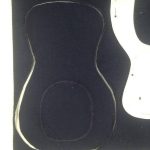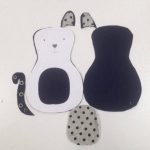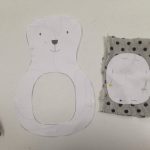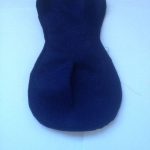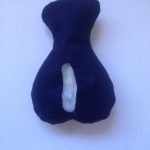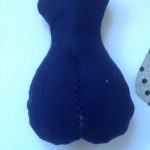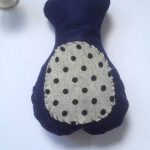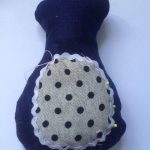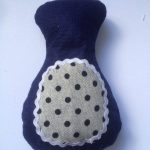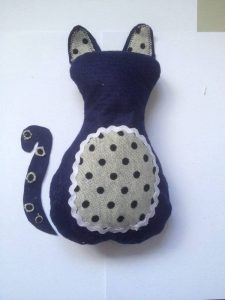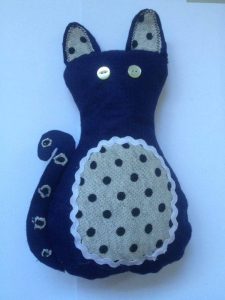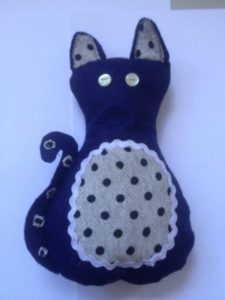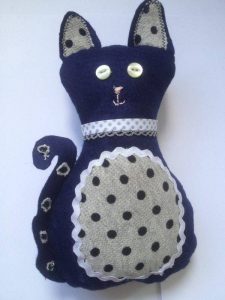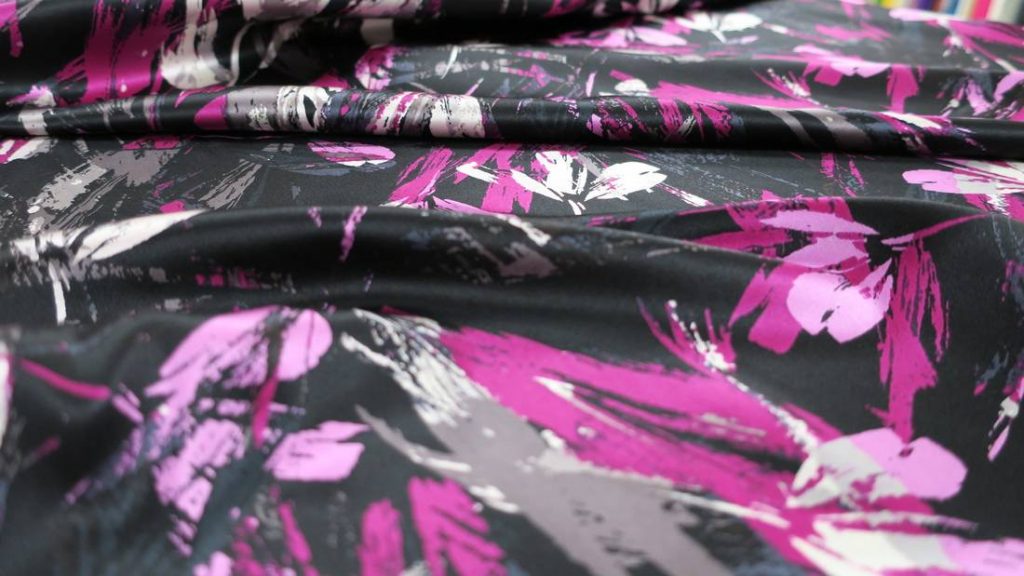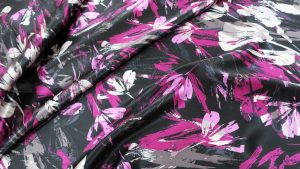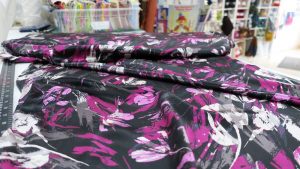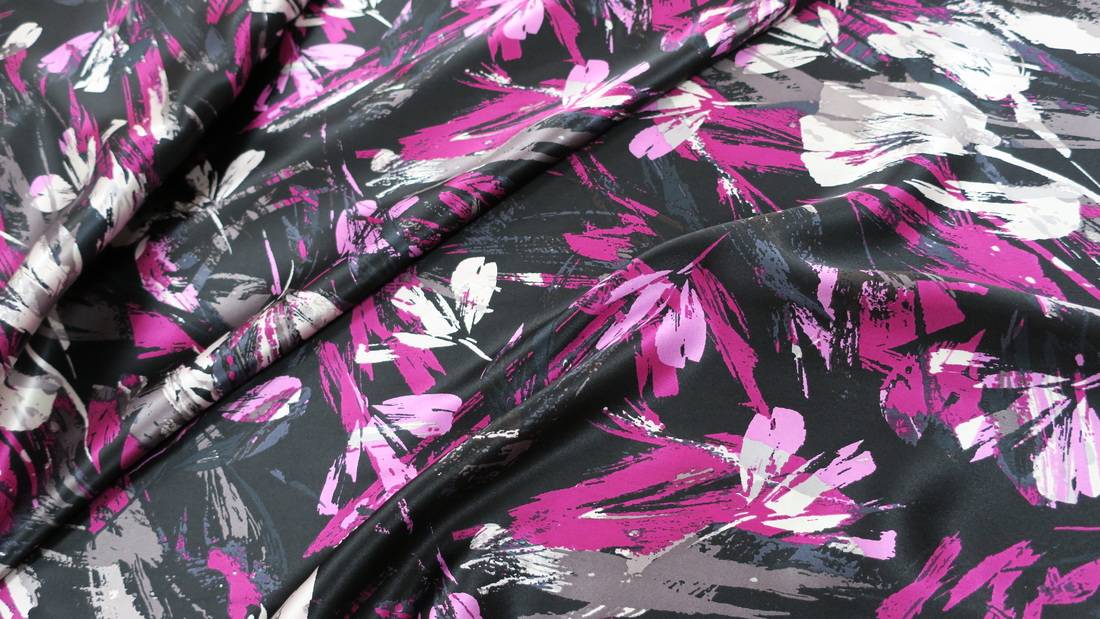Playful prints and super soft fleece lined baby blankets – or rather, Minky or Dimple blankets – have been filling up Pinterest boards everywhere! These really soft blankets are the perfect gift for newborn babies or make them a little bigger and you can gift them to slightly older children too!
The soft fleece adds comfort and warmth, while the cotton or flannelette adds style and novelty.
The blankets themselves are so easy to make and they take very little time too, so even if you’re a beginner, you’ll be able to make one of these too!
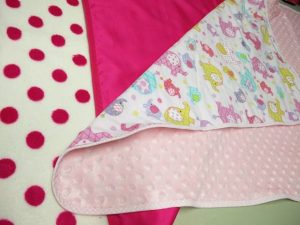
What You’ll Need to Make a Baby Minky Blanket
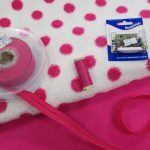
- 1m x Flannlette
- 1m x Fleece (or Dimple Plush)
- Coordinating Thread (we used 1 x 100m Reel of Gütermann Sew All)
- 3.5m x Coordinating (or Contrasting) Bias Binding
How to Make a Baby Minky Blanket
Cut your flannelette fabric to 75cm (29 Inches) x 95cm (37 Inches).
Once cut, you can then use this as a template to cut your fleece.
You should now have two pieces of fabric that both measure 75cm (29 Inches) x 95cm (37 Inches).
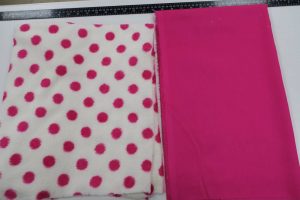
Pin the two pieces of fabric together, making sure that the wrong sides are facing inwards (wrong sides together).
You should have the pattern of the fabric facing to the outside of the blanket.
Stitch around the edges of the rectangle, making sure that you are sewing through both the fleece and the cotton/flannelette. You will need to use a narrow seam allowance of about 1cm.
When you’re done, trim back your seam allowances as close to the stitching as you can. We used pinking shears at this point to neaten the edge and reduce fraying.
Find the end of the bias binding you have chosen and fold it in on itself, so there is no raw edge.
Pin around the edges of the blanket, curving the binding at the corners – this makes it easier to sew as there is less bulk of material; it will also look neater.
When you have pinned one side of the binding stitch it in place.
Fold the bias binding over the top of the material and pin the other side as you did in the previous step. Once pinned, stitch in place.
You should now have your very own, gorgeous minky blanket!
We made two minky blankets a pink flannelette one and a cotton sateen one.
The fabrics we used were:
- Pink Cotton Sateen, 100% Cotton, 115cm (45 Inches) wide
- Cotton Flannelette, 100% Cotton, 115cm (45 Inches) wide
- White & Pink Polkadot Fleece
- Dimple Plush in Baby Pink

